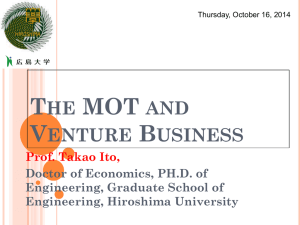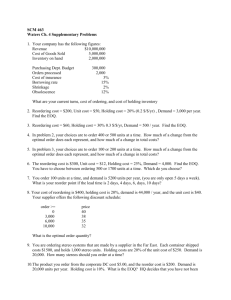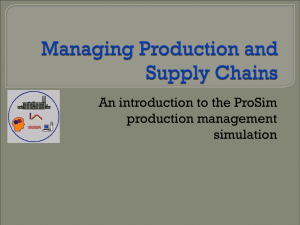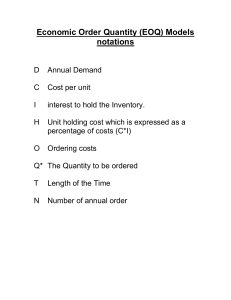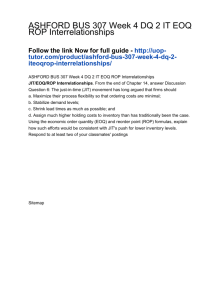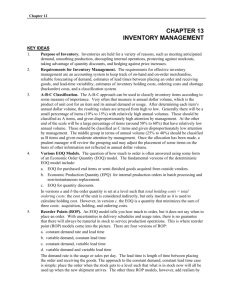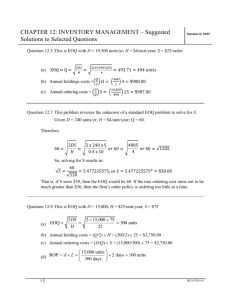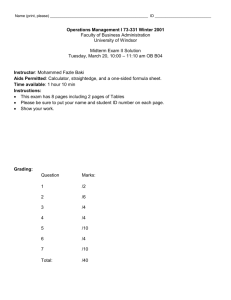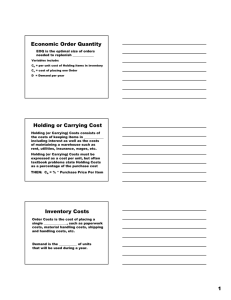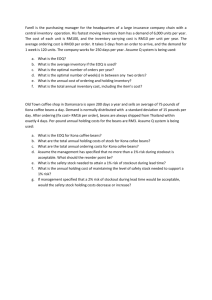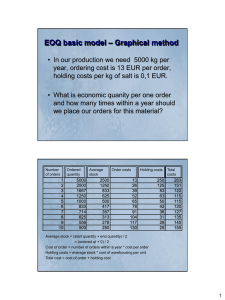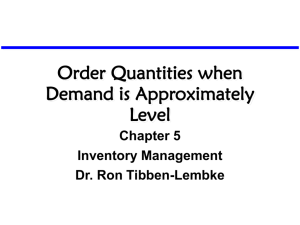Sample questions for Chapter 7
advertisement
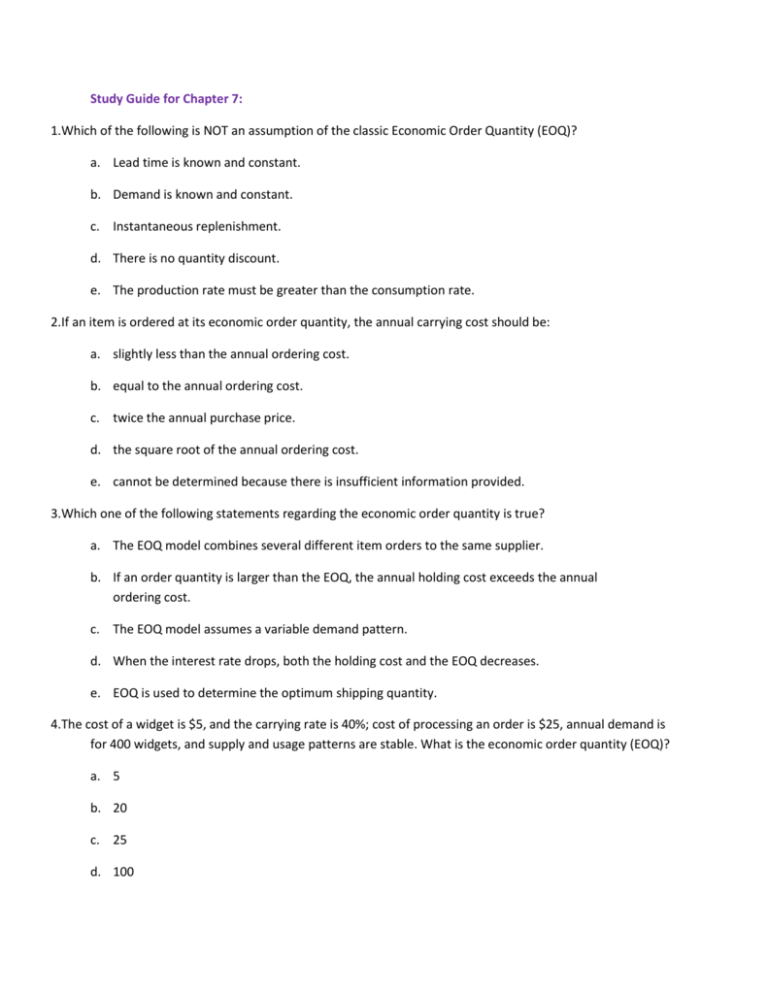
Study Guide for Chapter 7: 1.Which of the following is NOT an assumption of the classic Economic Order Quantity (EOQ)? a. Lead time is known and constant. b. Demand is known and constant. c. Instantaneous replenishment. d. There is no quantity discount. e. The production rate must be greater than the consumption rate. 2.If an item is ordered at its economic order quantity, the annual carrying cost should be: a. slightly less than the annual ordering cost. b. equal to the annual ordering cost. c. twice the annual purchase price. d. the square root of the annual ordering cost. e. cannot be determined because there is insufficient information provided. 3.Which one of the following statements regarding the economic order quantity is true? a. The EOQ model combines several different item orders to the same supplier. b. If an order quantity is larger than the EOQ, the annual holding cost exceeds the annual ordering cost. c. The EOQ model assumes a variable demand pattern. d. When the interest rate drops, both the holding cost and the EOQ decreases. e. EOQ is used to determine the optimum shipping quantity. 4.The cost of a widget is $5, and the carrying rate is 40%; cost of processing an order is $25, annual demand is for 400 widgets, and supply and usage patterns are stable. What is the economic order quantity (EOQ)? a. 5 b. 20 c. 25 d. 100 e. 200 5.The cost of a widget is $5, and the carrying rate is 40%; the cost of processing an order is $25, the annual demand is 400 widgets, and supply and usage patterns are stable. Assuming you are ordering at the lot size of 200 units per order (not the EOQ quantity). What is the annual ordering cost? a. $10 b. $25 c. $50 d. $200 e. Cannot be determined based on the given information. 6.Companies hold a supply of inventory for all of the following reasons EXCEPT: a. meet variation in product demand b. increase production change/setup costs c. allow production scheduling flexibility d. purchase in bulk to take advantage of quantity discounts e. maintain independence of operations (Decoupling) 7.Which of the following is a disadvantage of excessive inventory? a. It hides production and other problems. b. It leads to higher inventory ordering cost. c. It leads to lower average inventory. d. It eliminates cycle stock. e. It reduces the need to conduct cycle count. 8.____, such as lubricants for machine, are used in the production process, but do not become parts of the final products. a. Raw materials b. Work-in-process c. Maintenance, repair and operating supplies d. Finished goods e. Cycle stock 9.Dependent demand and independent demand items differ in that I. for any product, all components are dependent-demand items II. the need for independent-demand items is forecast III. the need for dependent-demand items is calculated a. I only b. I & II only c. I & III only d. II & III only e. I, II & III 10.Use this information below to calculate the optimal order quantity: Annual demand for backpacks is 43,000 units The cost to place an order is $220 The per unit cost of the item is $60.00 The annual holding rate is 37.5% Choose the closest answer. a. 920 units b. 250 units c. 710 units d. 830 units 11.Which of the following is not a major advantage of RFID over bar code technology? a. Ability to store huge amount of information on the RFID tag. b. Cost of the RFID tag. c. Ability to identify goods at the item level. d. Direct line of sight is not needed for the RFID reader to read an RFID tag. 12.The revenue for a firm is $1,500,000. Its cost of revenue is $800,000 and its average inventory for the year is $50,000. What is the inventory turnover? a. 1.875 times b. 13.7 times c. 16 times d. 30 time 13. Briefly describe the differences between dependent and independent demand. 14. List four assumptions of the EOQ model. 15. Name and briefly describe the four basic types of inventory. 16. Describe how an ABC analysis can be used to manage inventory. 17. What is Radio Frequency Identification (RFID)? Answers: 1.E 2.B 3.B 4.D 5.C 6.B 7.A 8.C 9.E 10.A 11.B 12.C
